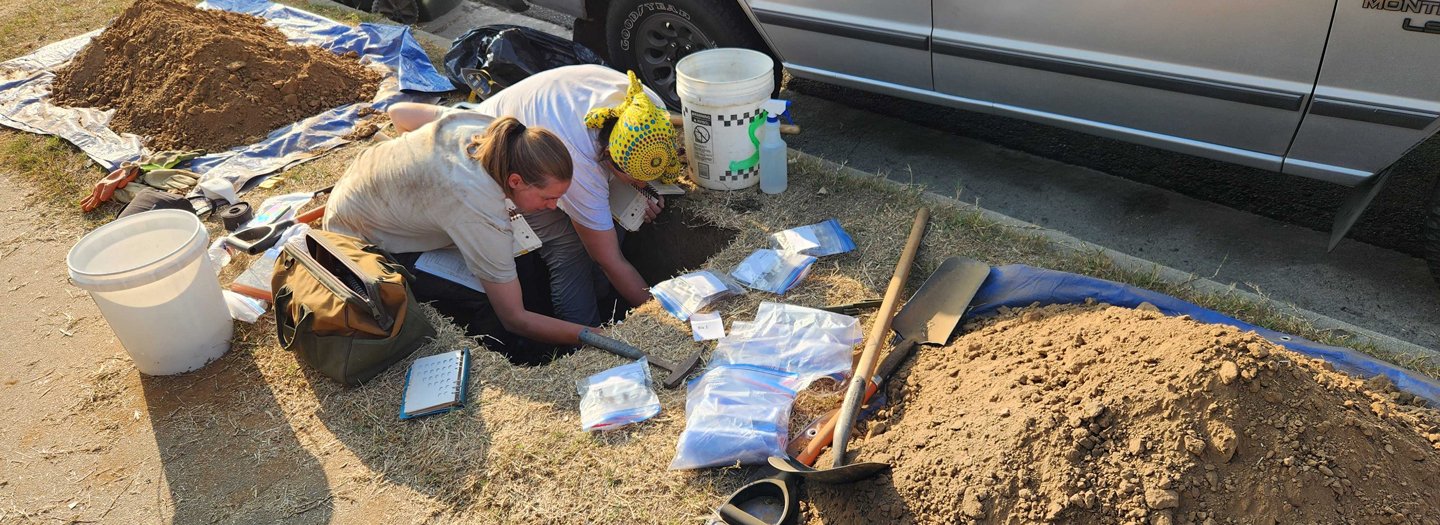

TreePeople’s Research Department
TreePeople’s Research Department has been at the forefront of urban environmental science for over a decade, producing scientific publications and developing insights that inform and inspire action along critical avenues such as urban heat, stormwater capture, nature-based solutions, soil health, and community well-being. We collaborate closely with public officials, researchers, practitioners, and community leaders to develop innovative and rigorous research that leads to real-world impact. We are involved in a diverse array of projects that work towards this shared vision of a sustainable future.
Selection of Projects
Residential Landscape Diversity Study Soil
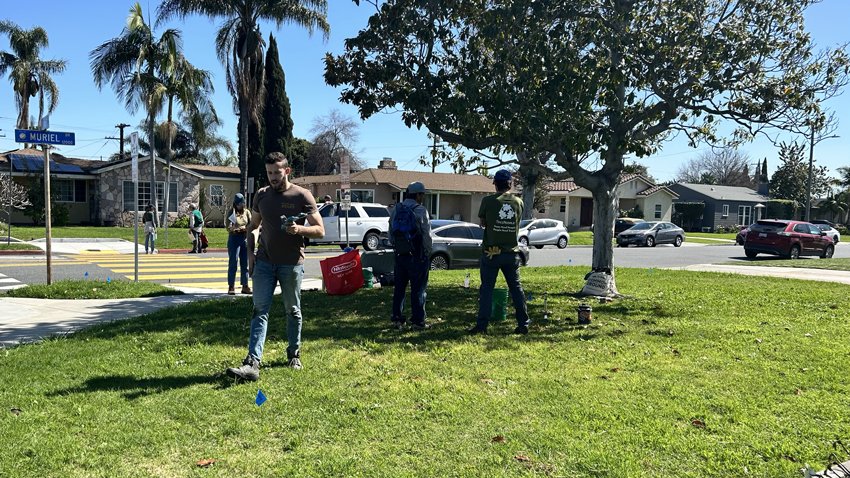

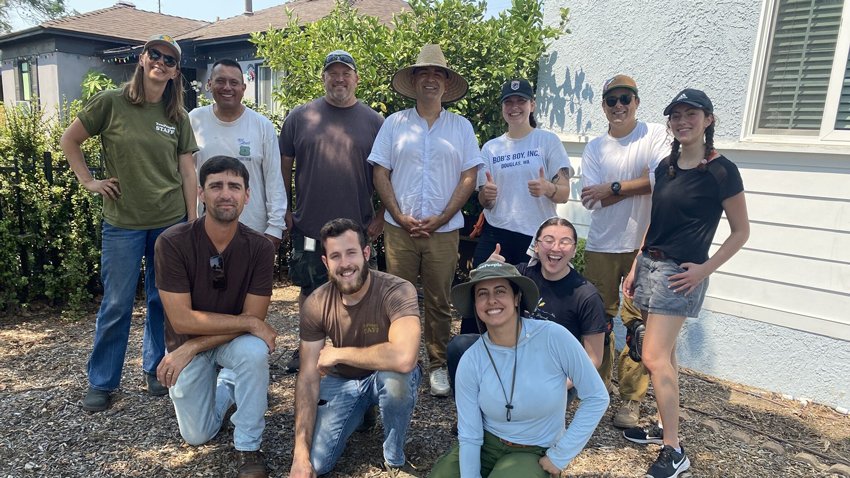
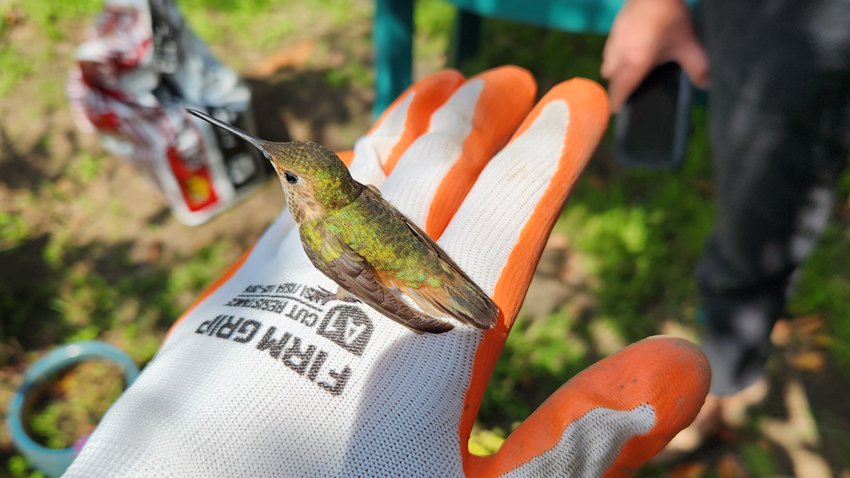
A Patch-based Survey of Ground Cover Impact on Surface Soil Properties
78% of residential land in Los Angelesis zoned for single-family housing, representing the single largest land use category. The aim of the study is to understand the effect of ground cover on soil physical, chemical and hydrological characteristics withinsingle-family residential properties, and to understand homeowners motivations behind choosing one form of ground cover over another. This is the starting point towardsdeveloping better socio-ecological approaches for improving soil development. As ground cover is often the choice of the homeowner, this is anactionable opportunity area to improve soil properties across Los Angeles County,leading to improved stormwater capture, increased resilience, reduced extreme heat, and other benefits.
Dynamic Urban Soil Properties Study

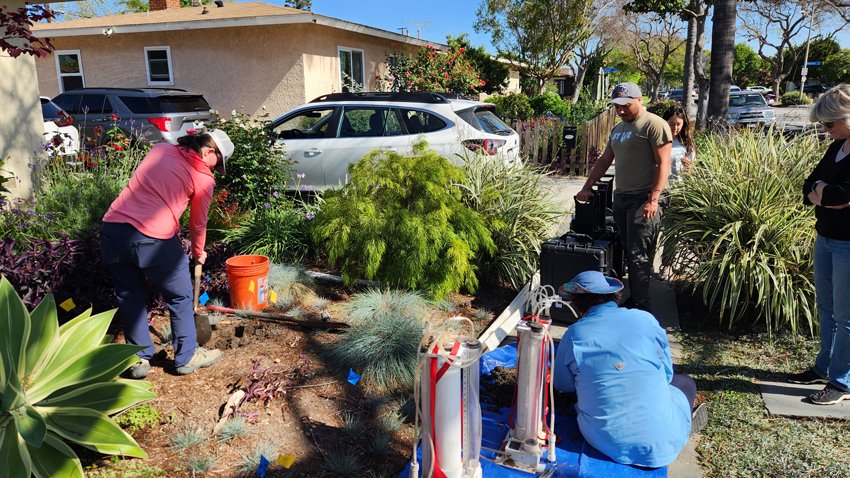
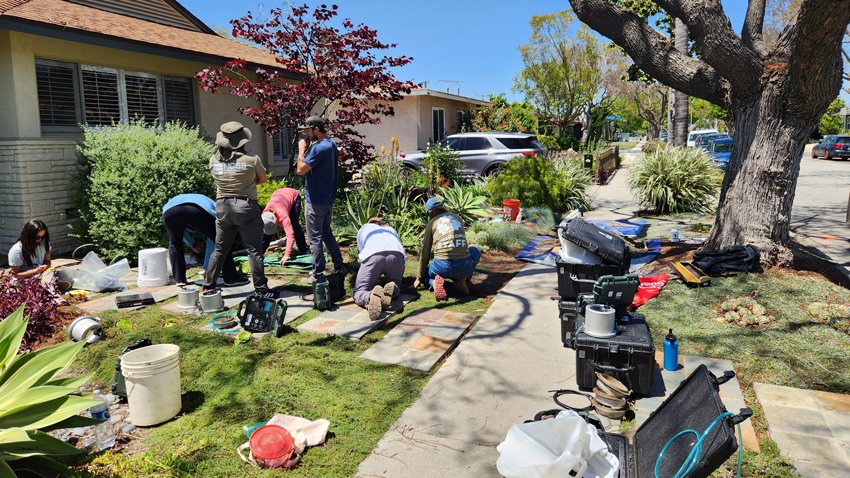
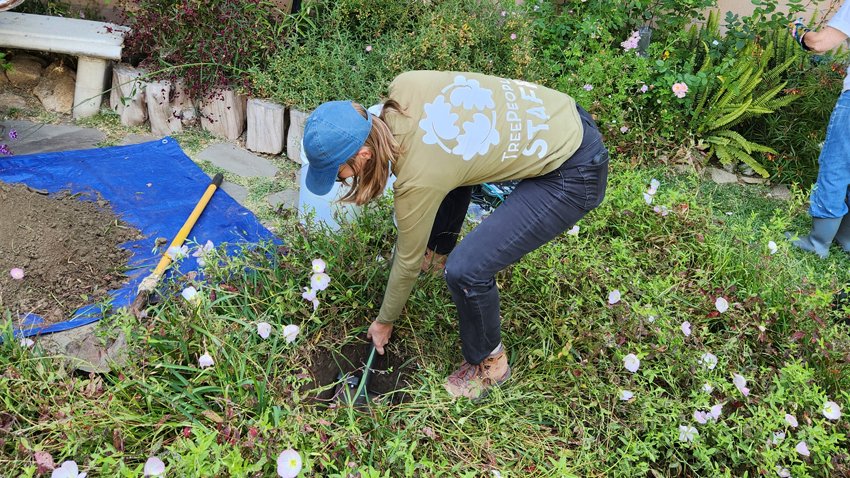
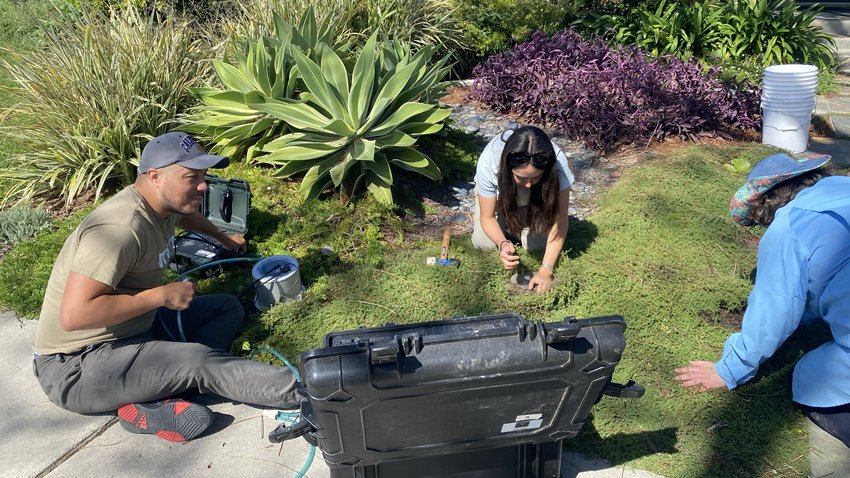
A Pit-based Characterization of Urban Soil on LA Residential Properties
A complement to the patch-based approach of the Residential Landscape Diversity Study for characterizing the impact of ground cover on soil development within the first five inches, the Dynamic Urban Soil Properties Study takes on a pit-based approach to this process. The goal is to provide additional context by understanding the soil depth at which ground cover impacts “trail off” and native soil qualities “take over”. Given that soil development processes are gradual, this important knowledge allows us to interpret the impact of ground cover changes over time, which requires knowing the depth and extend of the modified zone.
This collaborative study was an opportunity for the special projects team at USDA-NRCS to improve their soil survey and particularly for the Hueneme series, more commonly found in the southern portion of Los Angeles County.
Socio-Economic Benefits of LA Trees Study

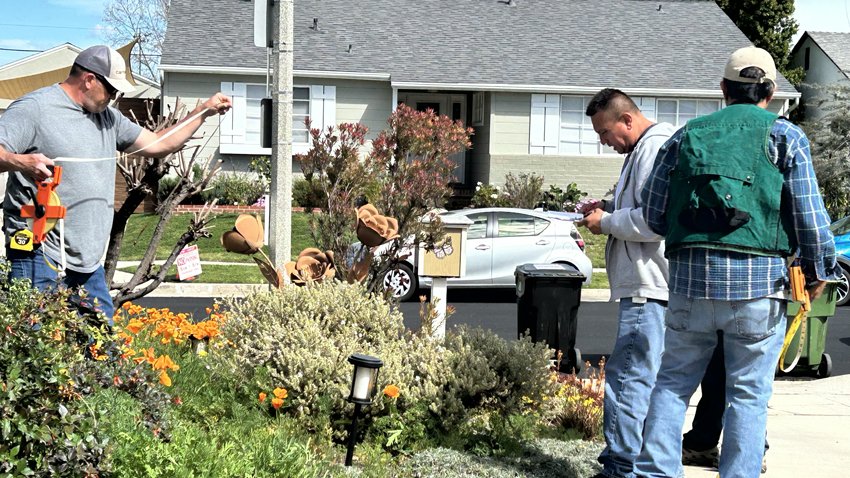
Describing the Value of Trees and other Plants on LA Residential Properties
Managed by the USDA, this environmental justice-focused study seeks to understand if trees and biodiversity are improving the well-being of residents in the Los Angeles area. The information from this research may assist partners in foregrounding equity and environmental justice when identifying, locating, and implementing future tree planting projects.
We understand trees to be an integral part of any healthy urban ecosystem, however many Angelenos view trees as a nuisance for various reasons. This study serves two main two main goals within the Climate Gardening context: To better understand the relationship that residents have with their trees, and to develop better outreach around trees.
Soil access is an equity issue for urban climate resilience
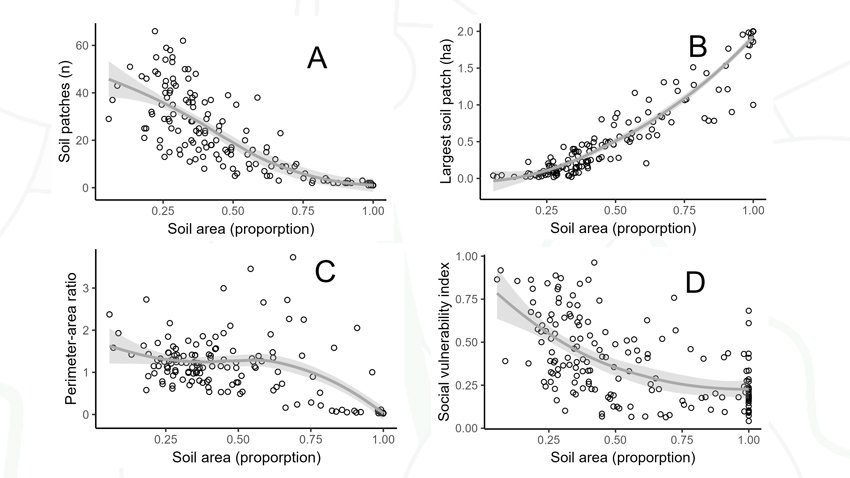
This study investigates how soil is distributed at fine spatial scales across Los Angeles County to examine the potential to for nature-based solutions to be realized equitably. Written by Adam Berland (Ball State University), Dustin Herrmann (TreePeople), Dexter Locke (USFS), and Kirsten Schwarz (UCLA) the significant findings of this study were accepted into the Journal of Landscape & Urban Planning (vol. 260).
Climate Resilience in the Schoolyard

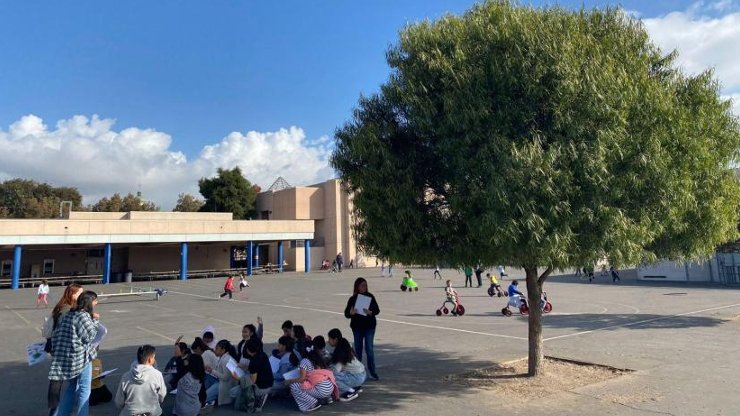
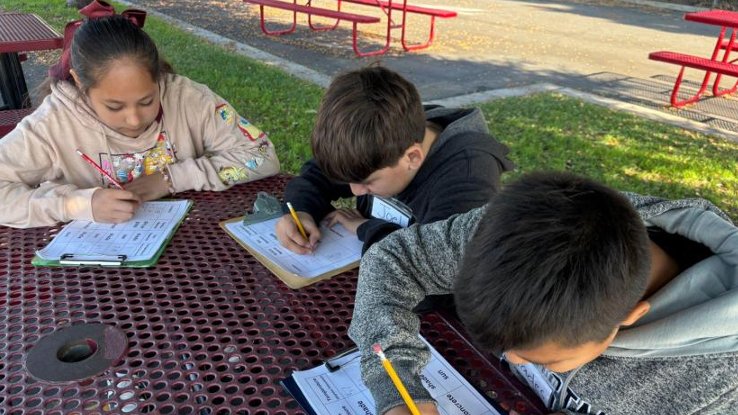
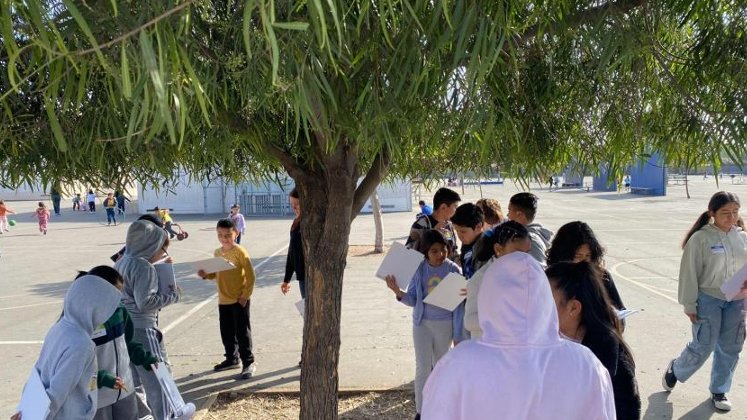
TreePeople environmental educators worked with Los Angeles County students to explore the role of soils, trees, and learning gardens in contributing to climate resilience in their own schoolyards. TreePeople’s education team developed an original curriculum to contextualize and engage students in the nature-based transformations on their campuses through our school greening program. Students engage in a three lesson arc, tailored to their grade level (Pre K - K, Grades 1-2, Grades 3-5, Middle School) that guides them through the process of scientific inquiry.
GroundTruth
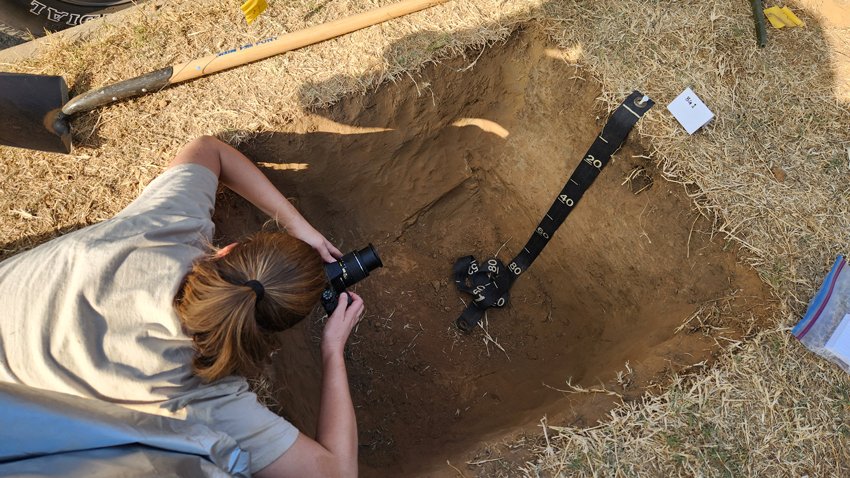
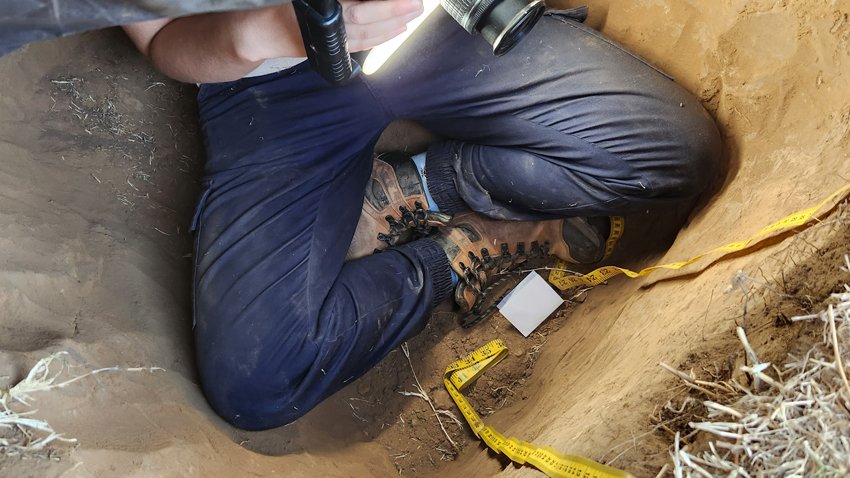
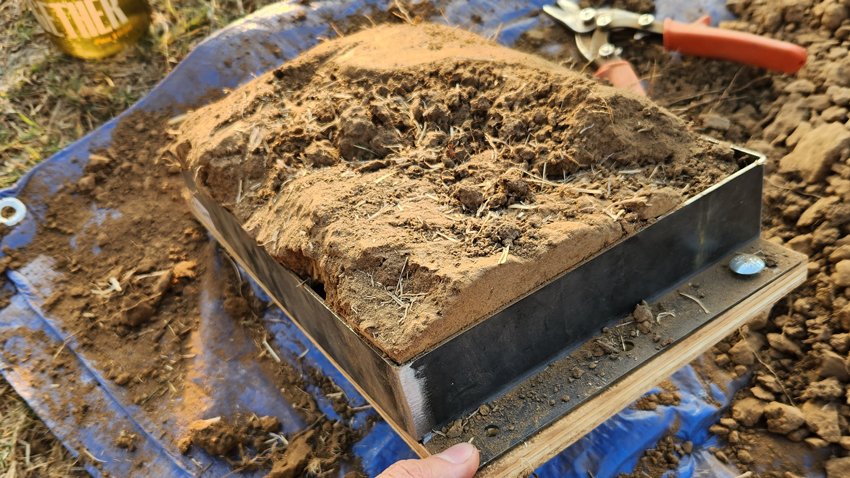
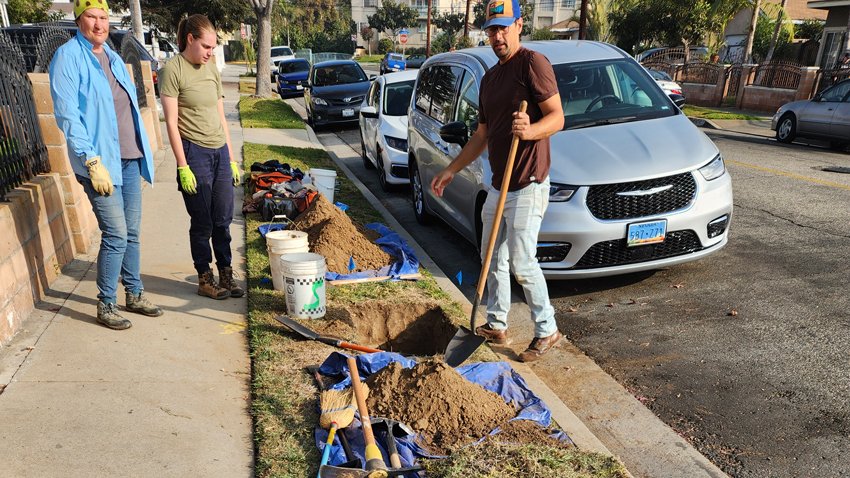

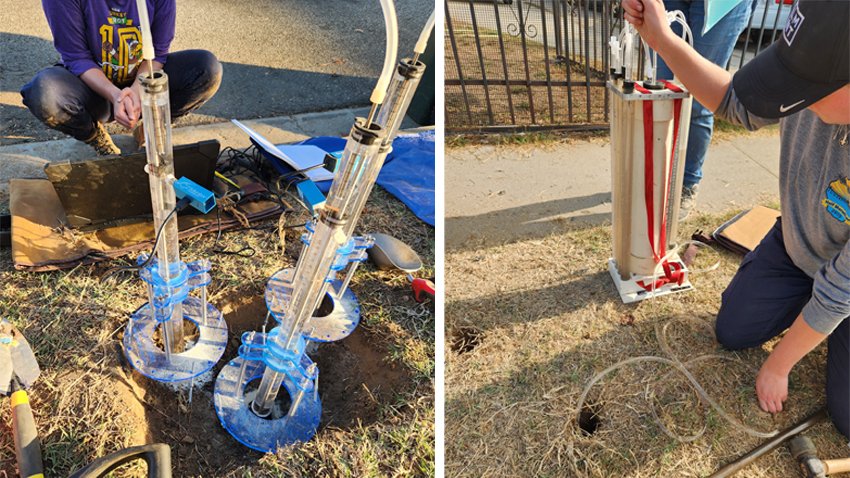
This SCWP-funded research study will provide field-validated design guidance for mitigating and restoring hydraulic properties of urban soil systems. Our goal is to optimize pre-disturbance ecosystem function by designing a robust and quantifiable nature-based solution strategy for building climate resilience in the Lower Los Angeles River Watershed (LLARW).
Specific objectives of this project are to:
-
Identify soil properties and model soil modifications that maximize plant-available water and minimize urban stormwater runoff;
-
Simulate the regional effects of the watershed-level mitigation strategies developed in objective 1; and
-
Develop field-validated, model-derived, feasible, and fully specified landscape designs that can be adopted into practice by emphasizing native species and supportive ecosystems that mimic and sustain pre-disturbance soil hydrologic functioning.
Living Schoolyards Scientific Study
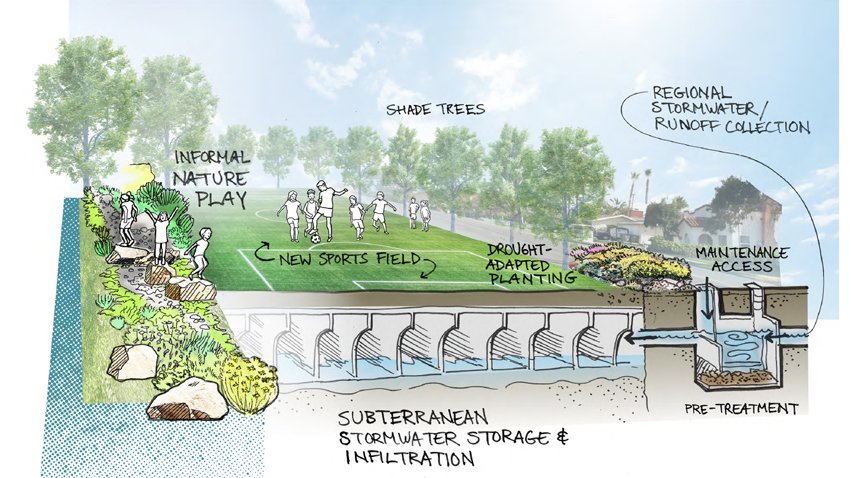
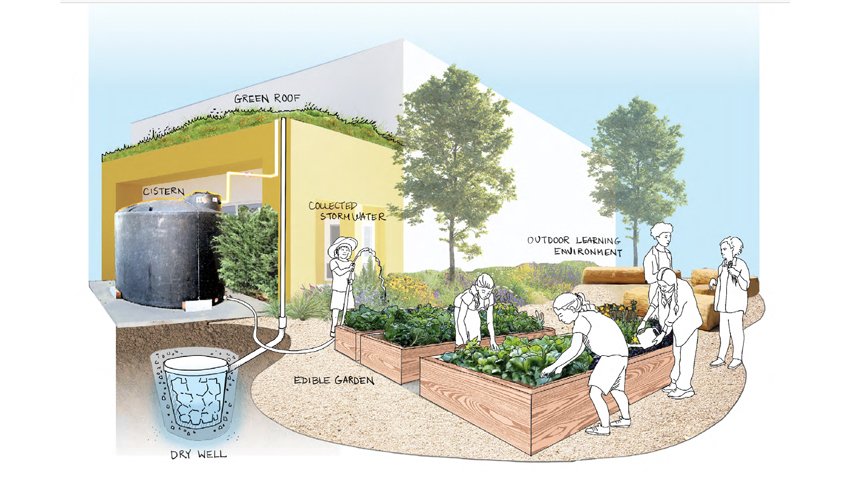

TreePeople, Studio MLA and Craftwater partnered with LAUSD to investigate how school campus greening can support communities with more than cooling shade. This Safe Clean Water Program Scientific Study assesses how stormwater capture and treatment infrastructure can be designed to integrate seamlessly with greener, nature-based schoolyard features to improve regional resilience to drought and increase groundwater stores. Modeling from this study suggests that stormwater infrastructure integrated across campuses in the District could potentially capture and manage almost 20 Billion gallons of stormwater and remove up to 15,000 pounds of zinc annually - enough water to support the needs of over 700,000 Angelenos every year. Untapped Potential - Leveraging Schoolyards for Stormwater Management and Climate Resilience makes the case for school districts as major contributors to stormwater targets in Los Angeles County and outlines exactly how school districts can leverage this potential through the Safe Clean Water Program while advancing the target of high performance schools.
Social Impact Collaborative Transformative Grant
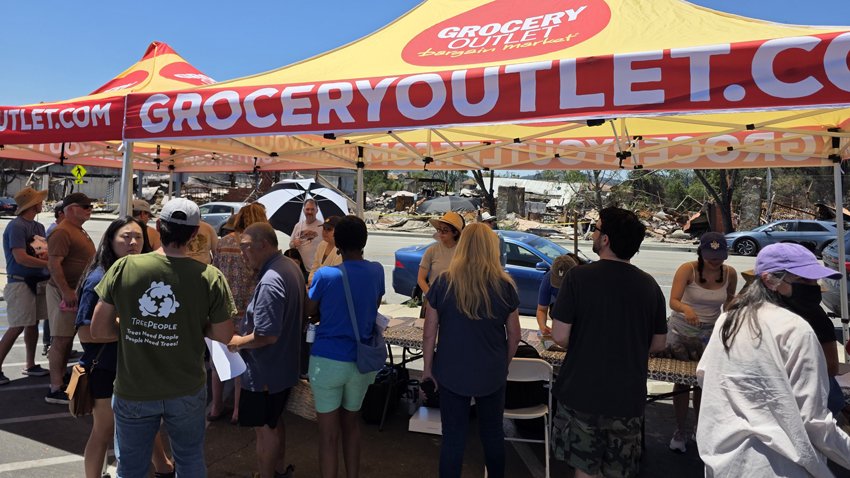
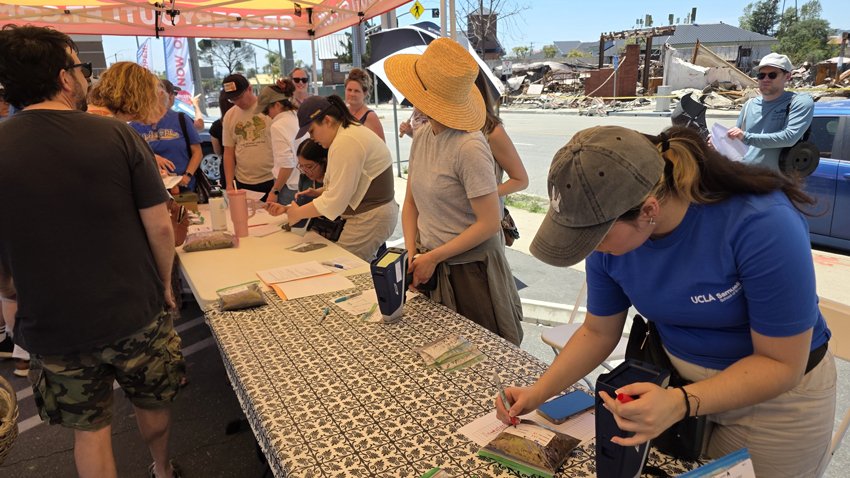
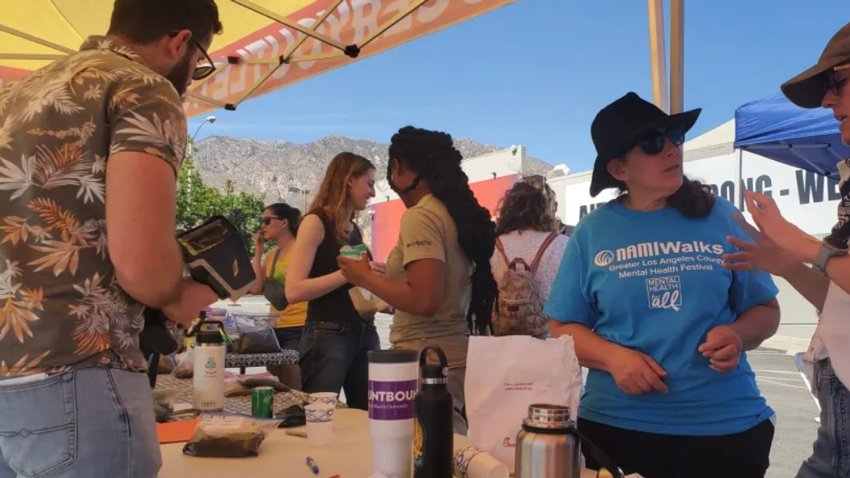
TreePeople is working with partners at UCLA, Center for Applied Ecological Remediation, Physicians for Social Responsibility, Laboratory for Indigenous Knowledge Systems, Communities for a Better Environment, and Watts Labor Action Committee (working group collectively known as the Social Impact Collaborative) to scale and implement a set of strategies to address our co-produced soil priorities:
-
a community soil testing program and synergistic soil curriculum,
-
a novel remediation program that includes residential soil banking with co-located composting hubs, and community-engaged bioremediation on high-priority sites, and
-
policy analysis to advance urban soil systems in LA and serve as a nationwide model. The long-term goals of this work are to improve equitable access to healthy soils and services that support climate-resilient futures, co-power partners to adopt evidence-based soil strategies, and train the future generation of scientists in community-engaged co-produced science.
Gateway Cities Regional Climate Collaborative
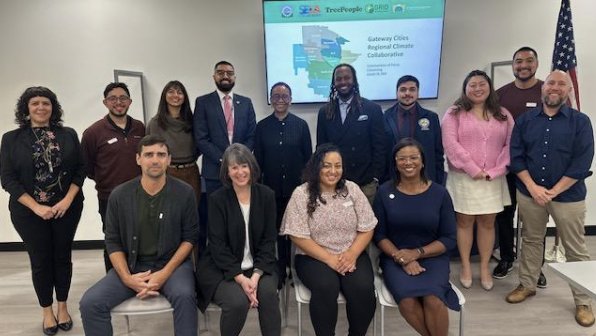
TreePeople is a member of the Gateway Cities Regional Climate Collaborative (GCRCC) alongside the Gateway Cities Council of Governments, the Southeast Los Angeles Collaborative, Grid Alternatives, and AltaMed. These partners have worked on multiple joint projects designed to help increase the health, wealth, and sustainability of the Southeast Los Angeles region’s individuals, families, and neighborhoods. The establishment of the GCRCC was supported through the California Strategic Growth Council’s (SGC) Regional Climate Collaboratives (RCC) Program, a capacity-building grant that enables cross-sectoral partners to deepen relationships and strengthen local coordination, leadership, knowledge, skills, and access to critical resources to drive and sustain climate action. TreePeople's role is to support the improvement of environmental health and climate resilience through nature-based solutions.
5th California Climate Assessment
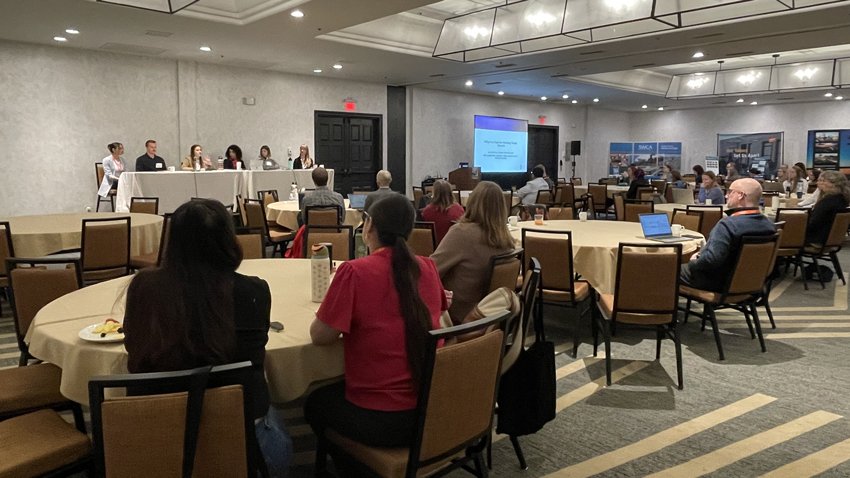
TreePeople serves as the Los Angeles Region's Community Engagement Lead Author for the 5th California Climate Assessment (5CCA). The 5CCA, which is led by the Governor's Office of Land Use and Climate Innovation (LCI), aims to compile the best available science on climate change and other informational resources at a local scale to help communities understand and develop informed responses to the impacts of climate change in their region. In addition to assembling and working closely with the Community Advisory Board, TreePeople is developing a Community Engagement Report that highlights community climate priorities in the Los Angeles Region. TreePeople presented preliminary findings on priorities alongside LCI at the Association of Environmental Professionals in April 2025.
Next Gen Bioretention
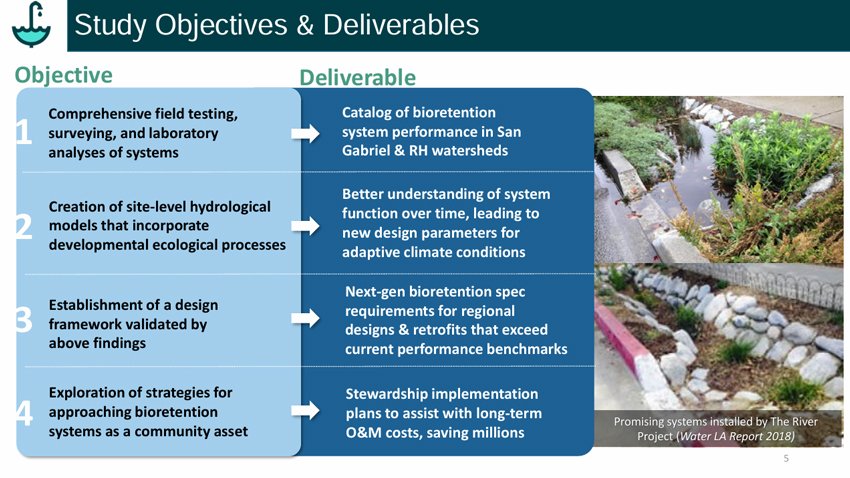
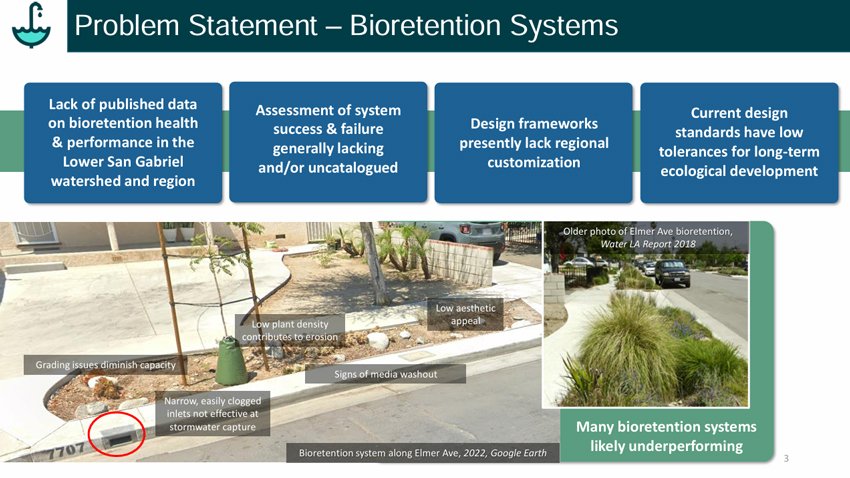
The Next Gen Bioretention study was funded by the Safe, Clean Water program for a total award of $1.38m to assess the effectiveness of existing bioretention systems and create new design specifications for the Upper and Lower San Gabriel watersheds, and the Rio Hondo watershed. There is currently very little existing performance data for bioretention systems. We suspect that many bioretention systems have failed for a number of potential reasons. Furthermore, there is a great deal of variability within bioretention system design between County-built systems and privately-designed systems. We want to understand which ones work better, and why. Then we want to design new, customized specifications that would improve future systems design.
Objectives are to:
-
Evaluate 15 systems per watershed across 3 tiers of comprehensive testing to produce catalog of bioretention system performance in Upper and Lower San Gabriel and Rio Hondo Watershed,
-
Create site-level hydrological models that incorporate developmental ecological processes to understand system function over time. This will aid in designing new parameters for adaptive climate conditions,
-
Use findings from study to develop a design framework that outlines specification requirements for regional designs and retrofits that exceed current performance benchmarks,
-
Develop stewardship plans aimed at reducing operation and maintenance costs by better incorporating bioretention systems to be utilized as public space within communities
Publications
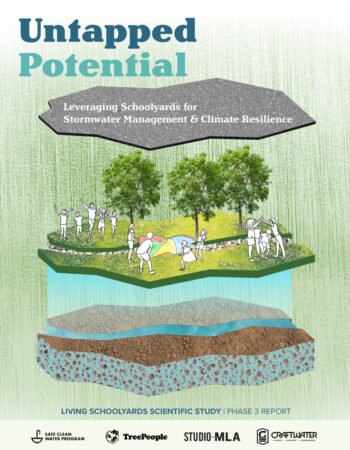
Living Schoolyards Scientific Study
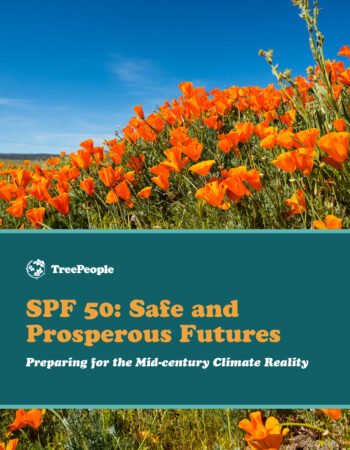
SPF 50: Safe and Prosperous Futures
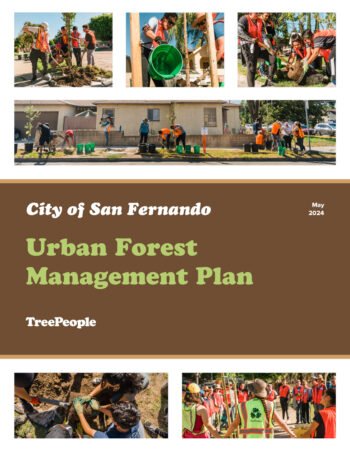
Urban Forest Management Plans
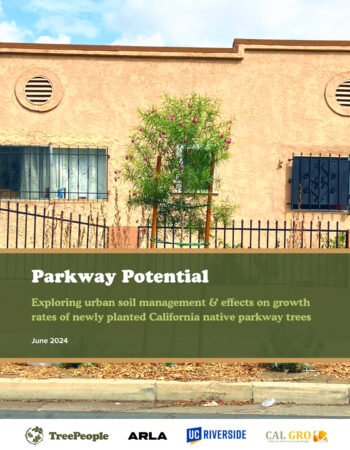
Parkway Potential

RX For Hot Cities 2: Reducing Heat and ER Visits With Trees and High-albedo Surfaces in Los Angeles

Cooler and Healthier

Mulch & Protect & Grow. Report

Urban Soil Management for Climate Resilience

Evaluating the Impacts of Trees on Residential Thermal Conditions in Los Angeles Using Community Science

Planting Resilience: Identifying Climate-Resilient Tree Species and Increasing Their Presence in Los Angeles’ Urban Forest

Tree Planting Cost-Benefit Analysis: A Case Study for Urban Forest Equity in Los Angeles

Healthy Soils for Healthy Communities

Healthy Soils for Healthy Communities Initiative

RX For Hot Cities: Climate Resilience Through Urban Greening and Cooling in Los Angeles

Public Trees for Public Good: An Assessment of Urban Forestry Management and Practices in Los Angeles County

The Power of Schools

Second Nature: Adapting L.A.'s Landscape for Sustainable Living

Rain to the Rescue: NRDC & TreePeople Issue Brief

Lessons from the Land of Oz for the American Southwest: Australia's Responses to Its Millennium Drought - A Study Tour Report

Moving Towards Collaboration: A New Vision for Water Management in the Los Angeles Region

Rainwater as a Resource: A Report on Three Sites Demonstrating Sustainable Stormwater Management

Transferring Lessons from Australia’s Millennium Drought to California

Inglewood & Lennox Greening Plan

Stormwater Capture Master Plan

The Simple Act of Planting a Tree
Updates
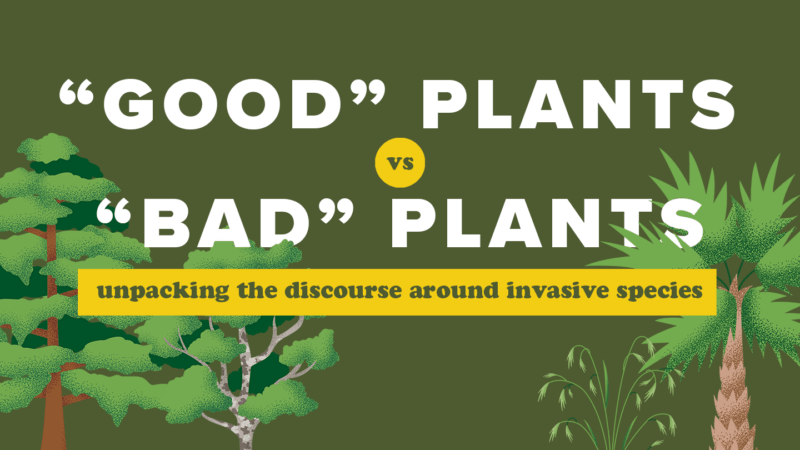
“Good” Plants vs. “Bad” Plants: unpacking the invasive species discourse
Native, non-native, and invasive. If you’re passionate about plants, you’ve probably heard these terms thrown around a lot. They’re used to describe the origins of different species, and often the connotation is that native plants are “good,” while other plants are “bad” or unwanted, and should be removed. But is this always true? Can plants…
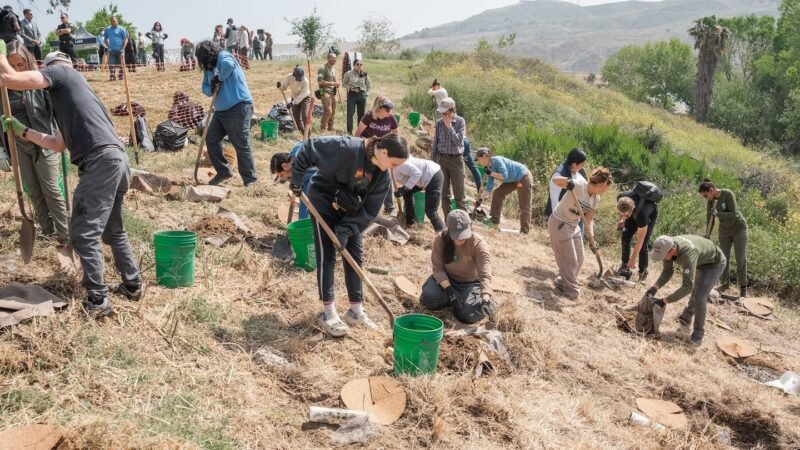
From fire damage to flourishing habitat: TreePeople kicks off $7 million mountain restoration effort
Fire has always been a natural part of California’s ecology. But in recent years, climate change and decreasing biodiversity have resulted in more frequent and larger wildfires in the Angeles National Forest and the adjacent wildland-urban interface. That’s why on May 16, 2024, TreePeople and California Botanic Garden (CalBG) kicked off a $7 million initiative…
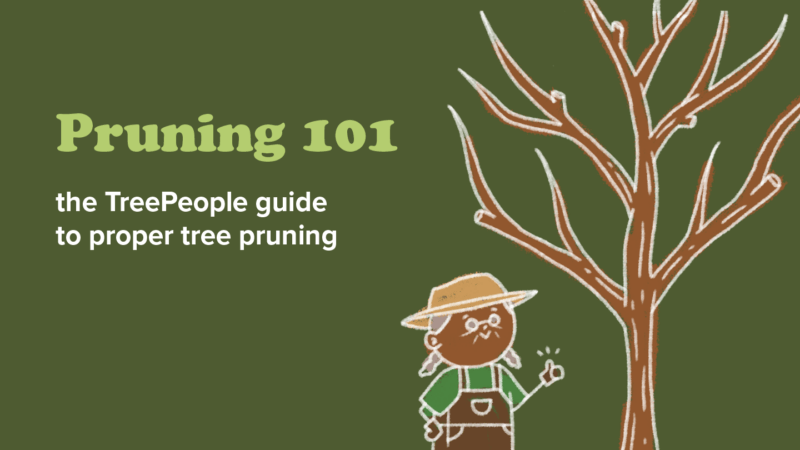
Pruning 101: the TreePeople guide to proper tree pruning
If you’re a homeowner, a landscaping professional, or someone who just cares a lot about the health of your local trees, you’re probably familiar with the practice of pruning. In its simplest form, pruning involves removing branches from a tree for a specific purpose. But how often should you be doing this? Which branches should…

How TreePeople is Greening Schoolyards
In the preface to Claire Latané’s Schools That Heal, she reminds us that “It is hard to make healthy schools. Even in neighborhoods that have plenty of resources, most school environments fall short of supporting students’ mental and physical health and well-being.” TreePeople’s School Greening initiative aims to collaborate with school communities to reimagine how…
Join Our Newsletter
Stay up to date with TreePeople’s newsletter. Find out about upcoming events, announcements, jobs, and other opportunities to get involved!
By submitting, you are agreeing to receive TreePeople related news and occasional communications, and agreeing to our Privacy Policy.

